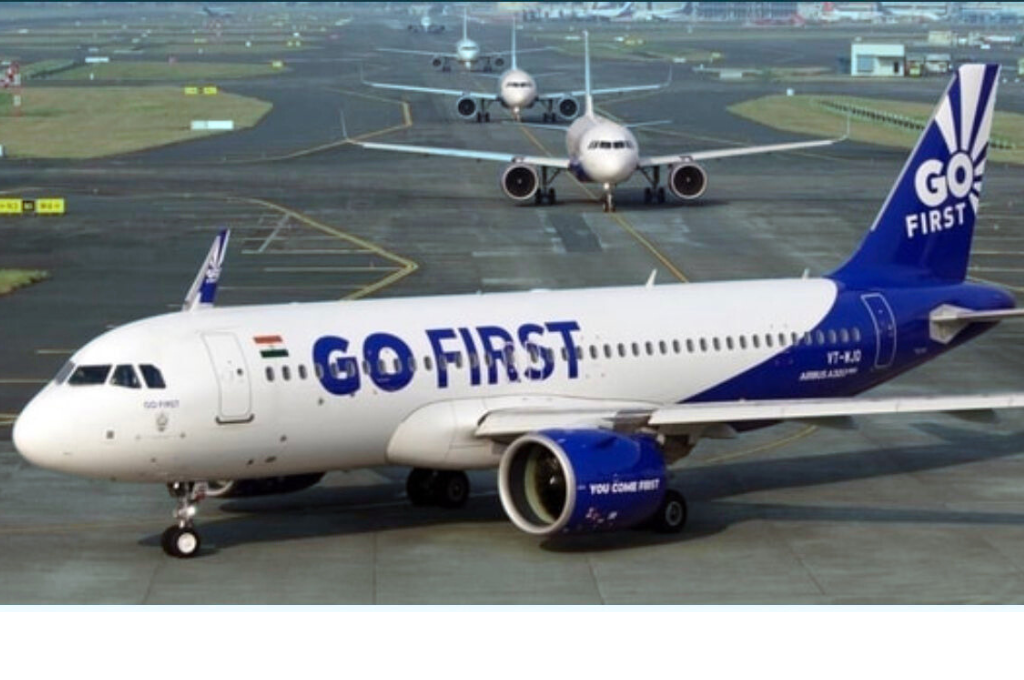Go Airlines, a major Indian airline that operates under the brand name Go First, filed for bankruptcy on Tuesday, May 3, 2023, after facing a severe financial crisis, according to the bankruptcy filing seen by news agency Reuters. The airline, which had already defaulted on payments to operational creditors, including vendors and aircraft lessors, had received notices from lessors for termination of aircraft lease agreements, with some initiating action against the airline to ground or repossess aircraft, as per the filing. Go First’s bankruptcy announcement has sent shockwaves throughout the aviation industry, highlighting once again how fragile the airline business can be.
Go First is the third-largest airline in India, with a market share of 10.8% in FY20, and was consistently profitable from 2010-2020, with a comparable EBITDAR to its largest competitor from 2016-2020. In FY22, Go First reported EBITDAR better than that of the largest competitor by almost 3.4%. The operating costs of the company continued to be lower than the largest competitor from 2020-2022. However, the airline has been going through a difficult financial period marked by a severe cash crunch, and the Covid-19 pandemic has only added to its woes.
According to the bankruptcy filing, Go First’s total liabilities to all creditors stood at INR 114.63 billion ($1.5 billion), including dues to banks, financial institutions, vendors, and aircraft lessors. The airline’s creditors include the Central Bank of India, Bank of Baroda, IDBI Bank, Axis Bank, and Deutsche Bank. Among them, the Central Bank of India and Bank of Baroda have an exposure of INR 13 billion ($174 million), respectively, under a consortium loan, while IDBI Bank has a smaller exposure of INR 500 million ($6.6 million).
Go First’s financial creditors were not aware of the airline’s plans to file voluntary insolvency and will meet soon to take stock of the situation, reported news agency Reuters quoting two people familiar with the matter. While the airline was going through a difficult financial period marked by a severe cash crunch, none of the lenders had any prior knowledge about Go First’s sudden move. Shares of Go First’s creditors fell sharply on Wednesday, May 4, as the airline owes them a combined amount of INR 65.21 billion ($873 million), as per the bankruptcy filing seen by news agency Reuters.
According to Go First, it has been forced to file for voluntary insolvency resolution proceedings before the National Company Law Tribunal (NCLT), Delhi, due to the “ever-increasing number of failing engines supplied by Pratt & Whitney’s International Aero Engines”. The airline has had to ground 25 aircraft (equivalent to approximately 50% of its Airbus A320neo aircraft fleet) as of May 1, 2023, due to the number of grounded aircraft caused by the unavailability of Pratt & Whitney’s engines. The percentage of grounded aircraft due to Pratt & Whitney’s faulty engines has grown from 7% in December 2019 to 31% in December 2020 to 50% in December 2022.
Go First had borrowed INR 12.92 billion ($173 million) under the government’s emergency credit scheme, which was first introduced during the Covid-19 pandemic. The government guarantees loans given out by banks to a company as part of the scheme. However, even this collective and significant support has not sufficed to prevent the enormous damage caused by Pratt & Whitney’s defective and failing engines.
Unfortunately, the problems faced by Go First are not unique. In fact, the airline industry is known to be notoriously difficult, with slim profit margins and high competition. The industry has seen its fair share of failures, even among well-established airlines.
One of the most notable airline failures was that of Pan American World Airways, better known as Pan Am. At its peak, Pan Am was one of the largest airlines in the world, with a presence in more than 80 countries. However, the airline was hit hard by the oil crisis in the 1970s, and later by the terrorist bombing of its Flight 103 over Lockerbie, Scotland, in 1988. These events, combined with mismanagement and financial struggles, led to Pan Am filing for bankruptcy in 1991 and ceasing operations shortly thereafter.
Another prominent airline failure was that of Trans World Airlines (TWA). Like Pan Am, TWA was once a major player in the airline industry, but struggled in the face of increasing competition and rising fuel prices. TWA filed for bankruptcy twice in the 1990s before being acquired by American Airlines in 2001.
More recently, we have seen the failure of airlines such as WOW Air, a low-cost carrier based in Iceland. Despite rapid growth and expansion, WOW Air was unable to sustain its business model and ceased operations in 2019, leaving thousands of passengers stranded.
Closer to home, we have also seen the failure of Kingfisher Airlines in India. The airline, founded by the flamboyant businessman Vijay Mallya, was once a leading player in the Indian aviation market. However, the airline was plagued by financial troubles and operational issues, and eventually had its license revoked by the Indian government in 2012.
These examples highlight the fragile nature of the airline industry and the challenges faced by airlines in maintaining profitability and sustainability. From fuel price fluctuations to changing consumer trends, airlines are subject to a wide range of external factors that can impact their operations and financial performance.
In the case of Go First, the airline has cited issues with faulty engines from its supplier, Pratt & Whitney, as a major factor in its financial struggles. This highlights the importance of maintaining strong relationships with suppliers and ensuring the quality and reliability of equipment used in operations.
Furthermore, Go First’s struggles also highlight the challenges faced by airlines in India, which has seen a boom in air travel in recent years. However, this growth has not necessarily translated into profitability for airlines, with many struggling to keep up with rising costs and competition.
In addition to these external factors, airlines must also navigate complex regulatory frameworks and keep up with rapidly evolving technology and industry trends. From adapting to new security measures to incorporating new digital technologies, airlines must constantly innovate and adapt to stay ahead of the curve.
The Indian aviation industry encounters various obstacles that hinder its expansion and durability. These challenges comprise infrastructure constraints, compliance with regulations, shortage of skilled workforce, high-cost structure, and others. A mechanism must exist to safeguard the interests of both airlines and consumers, rather than favoring only one side.
In conclusion, the failure of Go First is a reminder of the fragile nature of the airline industry and the challenges faced by airlines in maintaining profitability and sustainability. While the industry has seen its fair share of failures, it has also seen success stories of airlines that have navigated these challenges and emerged stronger. It is clear that in order to succeed in this highly competitive industry, airlines must remain agile, innovative, and adaptable to change.
















